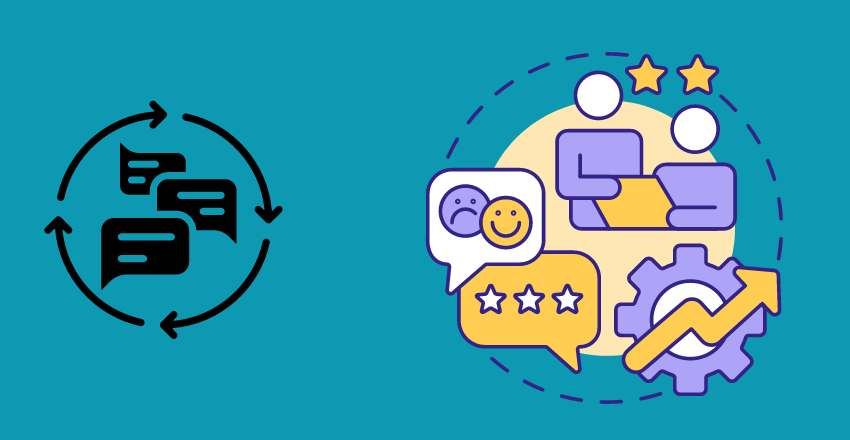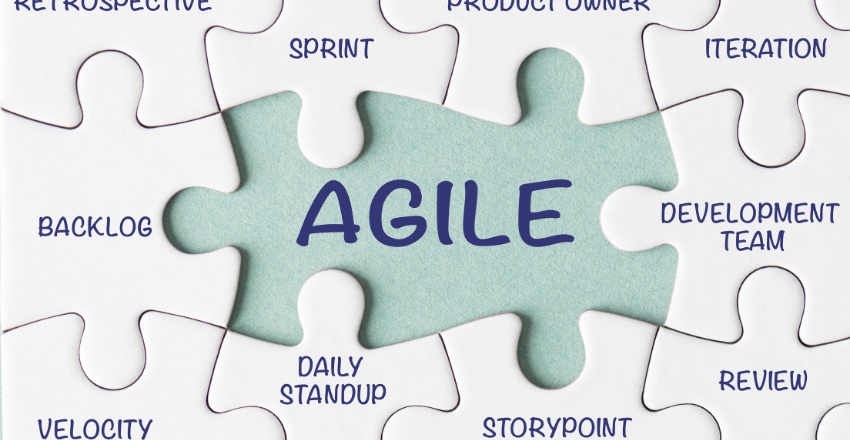In many development teams, feedback is often seen as just another checkbox to tick off during annual performance reviews. But, this outdated approach can stifle growth and breed resentment in a rapidly evolving dev environment. Having managed dynamic teams for years, I believe in the power of continuous feedback in fueling innovation and improvement.
The Limitations of Annual Performance Reviews
Annual performance reviews have long been a staple in corporate environments. However, in the fast-paced world of software development, this traditional method is increasingly seen as inadequate. Imagine running a marathon but only getting feedback on your pace, form, and strategy once a year. By the time you receive your review, the race is over, and the advice is no longer relevant. This is the reality for many developers who only receive feedback during annual reviews.
The Need for Continuous Feedback
Continuous feedback is like having a coach who runs alongside you, providing real-time insights and encouragement. It allows developers to make immediate adjustments, learn from their mistakes, and capitalize on their strengths. This approach not only accelerates personal and professional growth but also fosters a culture of open communication and trust.
The Struggling Junior Developer

Situation: Jane, a junior developer, was struggling with writing efficient code. Her annual review highlighted her weaknesses, but by then, she had spent a year feeling incompetent and unsure of her abilities.
Initial Code:
Jane’s initial code was functional but not efficient. She wrote a function to process a list of data and remove duplicates, but it used a list to check for duplicates, which was not optimal.
# Jane's initial code to process data and remove duplicates
def process_data(data):
result = []
for item in data:
if item not in result:
result.append(item)
return result
# Sample data
data = [1, 2, 2, 3, 4, 4, 5]
# Processed result
processed_data = process_data(data)
print(processed_data) # Output: [1, 2, 3, 4, 5]Analysis:
- The
process_datafunction uses a list (result) to store unique items. - For each item in the input data, it checks if the item is already in the
resultlist before appending it. - This approach has a time complexity of O(n^2) because checking membership in a list is O(n) and this check is done for each item in the input list.
Feedback Session:
During the bi-weekly feedback sessions, her team lead reviewed her code, discussed the inefficiencies, and introduced the concept of using a set for better performance. Sets in Python have average time complexity of O(1) for membership checks, making them more efficient for this purpose.
Improved Code:
With continuous feedback, Jane rewrote her function using a set to improve efficiency.
# Jane's improved code using a set for better efficiency
def process_data(data):
return list(set(data))
# Sample data
data = [1, 2, 2, 3, 4, 4, 5]
# Processed result
processed_data = process_data(data)
print(processed_data) # Output: [1, 2, 3, 4, 5]Analysis:
- The
process_datafunction now uses a set to remove duplicates. - Converting the list to a set removes duplicates efficiently with a time complexity of O(n).
- Converting the set back to a list ensures the output format remains consistent with the initial implementation.
Within a few months, Jane’s coding skills improved significantly. She felt more confident and engaged, and her contributions to the team increased. The real-time feedback helped her correct course quickly, making her a more effective developer.
Breakdown:
- Initial Assessment: Jane’s code was functional but inefficient due to the use of a list for membership checks.
- Feedback Session: The team lead explained the inefficiency and introduced the concept of sets in Python for better performance. They reviewed her initial code together and discussed how using a set would optimize the function.
- Implementation: Jane rewrote her function using sets, improving the performance significantly. The team lead reviewed her new code, provided positive reinforcement, and discussed additional scenarios where using sets would be beneficial.
Outcome: This continuous feedback process not only improved Jane’s coding skills but also built her confidence. She began to approach coding challenges with a problem-solving mindset and sought feedback proactively. The timely and constructive feedback transformed her from a struggling junior developer to a valuable team member.
Building a Culture of Trust

Continuous feedback requires a foundation of trust. Developers need to feel that feedback is intended to help them grow, not criticize them. This trust is built through consistency, empathy, and transparency. Regular one-on-one meetings, open-door policies, and a focus on positive reinforcement are key elements in fostering this trust.
The High-Performing Senior Developer
Situation: Mark, a senior developer, was excellent at his job but felt undervalued and unchallenged. His annual reviews were always positive, but they didn’t provide the stimulation he needed to stay engaged.
Solution: His manager introduced continuous feedback with a focus on professional development. They set up monthly check-ins to discuss his career goals, interests, and potential new challenges.
Concerns: Mark worried that continuous feedback might turn into micromanagement. However, his manager assured him that the purpose was to support his growth and address his aspirations.
Outcome: Mark began working on more complex projects and mentoring junior developers. The continuous feedback helped him identify new areas to explore and kept him motivated. He felt valued and saw a clear path for his career progression within the company.
Breakdown:
- Initial Assessment: Mark felt his work lacked challenges, leading to disengagement.
- Feedback Session: His manager discussed Mark’s career aspirations and areas of interest.
- Implementation: Mark took on a new project involving microservices architecture, which was more complex and aligned with his interests.
Peer feedback can be a powerful tool in a development team. It allows team members to learn from each other and fosters a collaborative environment. Peer reviews of code, for example, can provide diverse perspectives and enhance the quality of the final product.
Code Quality through Peer Reviews

Situation: The team noticed a recurring issue with code quality. Bugs were slipping through the cracks, leading to frequent patches and hotfixes. The development process was becoming inefficient, and the team needed a solution to improve overall code quality.
Initial Code:
Developer A wrote a function to fetch data from a URL and handle errors, but the initial implementation had basic error handling and didn’t check the response status properly.
// Initial code by Developer A
function fetchData(url) {
fetch(url)
.then(response => response.json())
.then(data => console.log(data))
.catch(error => console.error('Error:', error));
}
// Sample usage
fetchData('https://api.example.com/data');Analysis:
- The
fetchDatafunction sends a request to a specified URL and logs the response data. - It catches and logs any errors, but does not check if the response status is OK (i.e., status code 200-299).
- This implementation may not handle cases where the server returns an error response (e.g., 404 Not Found, 500 Internal Server Error).
Peer Review Feedback:
During a peer review session, Developer B reviewed the code and suggested improvements to handle errors more robustly by checking the response status before attempting to parse the JSON.
Improved Code:
With the peer review feedback, Developer A improved the error handling by adding a check for the response status.
// Improved code based on peer review feedback
function fetchData(url) {
fetch(url)
.then(response => {
if (!response.ok) {
throw new Error('Network response was not ok ' + response.statusText);
}
return response.json();
})
.then(data => console.log(data))
.catch(error => console.error('Error:', error));
}
// Sample usage
fetchData('https://api.example.com/data');Analysis:
- The improved
fetchDatafunction now includes a check to ensure the response status is OK. - If the response status is not OK, it throws an error with a descriptive message.
- This enhancement ensures that the function handles server error responses appropriately, improving the robustness of the code.
Outcome: The peer review system significantly improved code quality. Developers learned from each other’s feedback, resulting in fewer bugs and a more robust codebase. This collaborative approach also strengthened team cohesion and trust.
Breakdown:
- Initial Assessment: The team identified recurring issues with code quality, primarily due to insufficient error handling in the code.
- Peer Review Session: Developer B reviewed Developer A’s code and identified the need for more robust error handling. They discussed the importance of checking the response status and provided guidance on how to implement it.
- Implementation: Developer A updated the
fetchDatafunction based on the feedback, adding a check for the response status. Developer B reviewed the updated code, provided positive reinforcement, and highlighted the improvement in error handling. - Learning Outcome: Through this peer review process, Developer A learned the importance of thorough error handling and became more aware of potential pitfalls in asynchronous operations. Developer B also gained confidence in providing constructive feedback, knowing it contributed to the team’s overall success.
Encouraging Peer Feedback:
- Training: Provide training sessions on how to give and receive constructive feedback.
- Documentation: Create documentation and guidelines for code reviews to ensure consistency.
- Rotation: Rotate peer review pairs regularly to expose developers to different coding styles and practices.
Benefits of Peer Reviews:
- Diverse Perspectives: Peer reviews bring diverse perspectives to the code, uncovering issues that the original developer might have missed.
- Knowledge Sharing: They facilitate knowledge sharing, allowing developers to learn new techniques and best practices from their peers.
- Team Collaboration: Regular peer reviews foster a culture of collaboration and continuous improvement within the team.
Example of a Structured Peer Review Process:
- Submit Code for Review: Developer A submits the code for peer review via the team’s version control system (e.g., GitHub, GitLab).
- Assign Reviewers: The code is automatically assigned to one or more peer reviewers (e.g., Developer B and Developer C).
- Review Code: Reviewers examine the code, providing comments and suggestions directly in the version control system.
- Discuss Feedback: Developer A addresses the feedback and discusses any clarifications needed with the reviewers.
- Approve Changes: Once all feedback is addressed, the reviewers approve the changes, and the code is merged into the main branch.
Addressing Common Concerns about Continuous Feedback

While continuous feedback offers numerous benefits, it also raises some concerns. Developers might fear micromanagement, burnout from constant scrutiny, or feel overwhelmed by too much feedback. Addressing these concerns is crucial for the successful implementation of continuous feedback.
Solution:
- Avoid Micromanagement: Make it clear that continuous feedback is not about controlling every aspect of their work. Instead, it’s about providing support and guidance.
- Prevent Burnout: Ensure that feedback sessions are constructive and not overly frequent. Balance feedback with positive reinforcement.
- Manage Feedback Overload: Focus on a few key areas for improvement at a time rather than overwhelming developers with too much information.
Managing Feedback Overload
Situation: Sarah, a mid-level developer, felt overwhelmed by the amount of feedback she was receiving from multiple sources.
Solution: Her manager streamlined the feedback process by consolidating input from different sources and focusing on the most critical areas for improvement. They also encouraged Sarah to prioritize the feedback and tackle it incrementally.
Outcome: Sarah found the streamlined process much more manageable. By focusing on key areas, she could make meaningful improvements without feeling overwhelmed. This approach helped her maintain her productivity and job satisfaction.
Breakdown:
- Initial Assessment: Sarah was receiving feedback from multiple sources, leading to confusion and stress.
- Feedback Session: Her manager consolidated the feedback, prioritizing the most important points.
- Implementation: Sarah addressed the feedback incrementally, focusing on one area at a time, which improved her performance and reduced stress.
The Role of Technology in Continuous Feedback

Leveraging technology can enhance the effectiveness of continuous feedback. Tools like Slack, Trello, and GitHub provide platforms for real-time communication, project tracking, and collaborative code reviews. These tools facilitate seamless feedback and ensure that it is integrated into the daily workflow.
Utilizing Technology for Continuous Feedback
Situation: The development team struggled with keeping track of feedback and ensuring it was acted upon promptly.
Solution: The team adopted a combination of Slack for real-time communication, Trello for task management, and GitHub for code reviews.
Example:
- Slack: Used for daily stand-ups and quick feedback.
- Trello: Used to track feedback items and their resolution status.
- GitHub: Used for detailed code reviews and comments.
Outcome: The integration of these tools streamlined the feedback process. Developers received timely feedback, and the tracking system ensured that no feedback was forgotten or ignored. This technological integration made continuous feedback a natural part of the development workflow.
Breakdown:
- Initial Assessment: The team faced challenges in tracking and acting on feedback.
- Implementation: Adopted Slack, Trello, and GitHub for communication, task management, and code reviews.
- Outcome: Feedback was integrated into daily operations, ensuring timely and effective responses.
Continuous Feedback for Innovation and Improvement
Continuous feedback is not just a trend; it’s a necessary evolution in managing development teams. It fosters a culture of growth, collaboration, and innovation. By providing real-time insights, encouraging peer reviews, addressing concerns, and leveraging technology, continuous feedback can transform your development team.
The traditional annual review may still have its place, but it should be complemented with continuous feedback to truly unlock the potential of your team. Embrace this approach, and watch your developers thrive, your projects succeed, and your organization innovate.
Source Links
https://www.talentguard.com/blog/understanding-the-benefits-of-continuous-feedback
https://lattice.com/library/what-is-continuous-feedback-and-what-are-its-benefits












